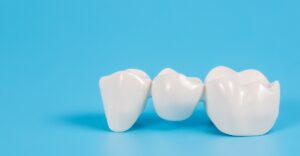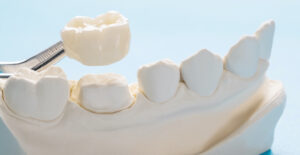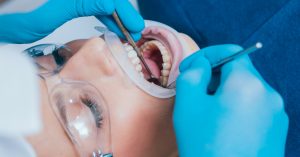Gum disease, also called periodontal disease is a chronic inflammation of the gums and surrounding tissue. It is the major cause of about 70 percent of adult tooth loss, affecting three out of four persons at some point of time.
Causes of Gum Disease
Gum disease is caused by the bacteria in dental plaque, a colorless film that constantly forms and sticks to your teeth. If not removed regularly through daily brushing, flossing, dental plaque can build up and the bacteria releases harmful products that cause infection within the gums and eventually spread to the surrounding bone. This can cause them to become loose and shift, and even fall out over time.
Lifestyle choices also play a very important role. An unbalanced diet can diminish the body’s ability to fight infection. Smoking or using tobacco in other forms can also accelerate the development of gum disease, as can stress. In patients with certain systemic diseases such as uncontrolled diabetes, leukemia and AIDS the body’s immune system is compromised. This makes the gums more prone to infection, as also making the gum disease more severe and harder to control.
Detecting Gum Disease
- Gums that bleed during brushing or flossing
- Gums that are red, puffy and swollen, or tender
- Teeth that look longer because the gums have receded
- Spaces that develop between teeth or a feeling that the teeth have shifted
- Constant bad breath or a bad taste in your mouth
- Pus coming from between your teeth and gums
Stages in Gum Disease
There are three stages of gum disease:
Gingivitis : This is the initial stage of gum disease, an inflammation of the gums caused by plaque buildup along the gumline. You may notice some bleeding during brushing and flossing. This early stage of gum disease is reversible, since the surrounding bone that holds the teeth in place has not yet been affected.
Periodontitis: At this stage, the supporting bone that holds the teeth in place are irreversibly damaged. Your gums may begin to form a pocket below the gumline, which traps food and plaque, further compounding the problem. Proper dental treatment and improved oral hygiene can usually stop the damage and maintain the bone and gums in a relatively healthy condition.
Advanced Periodontitis: In this final stage of gum disease, the bone supporting the teeth is destroyed, which can cause the teeth to shift or loosen. More aggressive treatment, including gum surgery and/or bone grafting may be required. If this does not improve the condition, teeth may need to be removed.
Periodontal Treatment
In the intial stages, a simple cleaning of the teeth and gums to remove the tartar may be all that is necessary. If periodontitis is present, treatment usually involves a deep cleaning. This includes scaling and root planing-removing plaque and calculus around the tooth below the gumline and smoothing the root surfaces. Low-dose antibiotics may be used short- or long-term to supplement the benefits of scaling and root planing. As stated earlier, more advanced cases may require surgical treatment. The surgery is designed to clean inaccessible areas of calculus,smooth root surfaces and reposition the gum tissue so it will be easier to keep clean by the patient.
Gum Disease Prevention
Removing plaque through daily brushing and flossing is the best and easiest way to ensure healthy gums. Your oral health care provider will put you on a hygiene program suited to your particular mouth condition, so make sure you follow their recommendations. Sticking to a regular oral hygiene regimen is crucial for patients who want to maintain the results of therapy. Manual soft nylon bristle brushes are the most dependable and least expensive. Electric brushes are also a good option, but don’t reach any further into the pocket than manual brushes. Auxiliary cleaning aids such as proxy brushes (small, narrow brushes) which are the best way to clean if you have spaces between the teeth, and rubber tips may be recommended by your dentist.
The general dentist usually detects gum disease and treats it in the early stages. In more advanced cases, the patient will be referred to a periodontist(gum specialist). The dentist and periodontist will work together to formulate a treatment plan for the patient.












